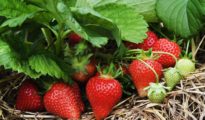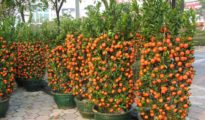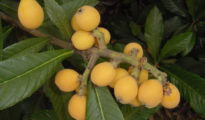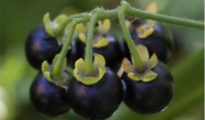Dwarf fruit trees are the perfect plants for those who have limited space, whether it be a small backyard or even an apartment balcony. Full fruit trees can not only take up a lot of space, but they also need significantly more maintenance, so check out these 5 best dwarf fruit trees and you'll be on your way to enjoying fresh, home grown fruit in no time!
These dwarf varieties were specifically engineered with small spaces in mind. They can easily grow in pots, require little maintenance, and they will make your small space look like a little orchard! If you love eating fresh fruits, it's time to start thinking about dwarf fruit trees! Before we get into that, you may be wondering where to buy dwarf fruit trees?
You can purchase dwarf fruit trees online, or at your local nursery. Depending on your climate and location, you may or may not be able to grow some fruit varieties. It's always best to check with your local nursery – if they have a certain fruit tree, it usually means that you CAN grow said fruit.
5 Best Dwarf Fruit Trees
#1. Dwarf Apple Trees

There are many different dwarf apple tree varieties you can choose from, and which one you choose, will completely depend on your USDA zone. Dwarf Granny Smith and Golden Delicious varieties, for example, do well in USDA zones 4 through 8, while Garden Delicious dwarf varieties do well in USDA zones 5 through 8. Whichever dwarf variety you choose to grow though, make sure you follow the care directions, and you'll be able to grow in a large pot or container! Some other popular dwarf apple tree varieties:
- Gala
- Jonagold
- Cox
- Pink Lady
Apple tree USDA zones: 4 through 8
#2. Dwarf Peach Trees

If you live in cooler climates, a dwarf peach or apricot tree is your best bet! Not only do these trees fruit quickly, but you can also move them indoors if the cold sets in earlier. You can expect a dwarf peach or apricot tree to fruit within 1-2 years of planting. Some popular dwarf peach tree varieties:
- Contender peach
- Pix Zee peach
- Pixie-Cot apricot
- Bonfire peach
Peach tree USDA zones: 7 through 9
#3. Dwarf Cherry Trees

Dwarf cherry trees will actually thrive in pots and containers, and their blossoms also look stunning, making them the perfect patio plant. You can choose from two types of dwarf cherry trees: sweet and sour cherries. While sweet cherries are easily found in grocery stores, sour cherries are not so common, but they're a lot easier to grow than their sweet counterpart and make for perfect cherry pies. Some popular dwarf cherry tree varieties:
- Nanking Dwarf Cherry
- Lapins
- Stella
- Northstar
- Sunburst
Cherry tree USDA zones: 4 through 7
#4. Dwarf Fig Trees

Fig trees not only look stunning, but they'll provide you with the most delicious fruit and will also thrive in pots on a patio or a small backyard. You can choose from a fully dwarf variety or a semi dwarf variety, which can grow up to 8 feet in height. They're easy to care for and can produce a lot of fruit. Some popular dwarf fig tree varieties:
- Brown Turkey
- Celeste
- Black Jack
Fig tree USDA zones: 7 through 10
#5. Dwarf Pomegranate Trees

If you're looking to grow something a little more unique, a dwarf pomegranate tree will be right up your alley! Pomegranate trees can live up to 200 years, which makes them a popular tree to grow. They only grow up to 3 feet in height, which makes them perfect for small spaces. Be sure to bring them indoors once weather cools down.
Pomegranate tree USDA zones: 7 through 11
#6. Dwarf Meyer Lemon Trees

One of the most popular and easiest lemon trees to grow is the Meyer lemon tree. It is a hybrid between a lemon and a mandarin orange, which not only makes delicious fruit but also looks stunning in any setting! The Meyer lemon tree grows to only 2 feet in height, which makes it perfect for small spaces as it can easily be grown in pots and containers. In the summer, the tree can be kept outdoors, while in the winter, it should be brought indoors in a warm and sunny room.
Meyer lemon tree USDA zones: 4-8 (patio) 8-11 (outdoors)
#7. Dwarf Orange Trees
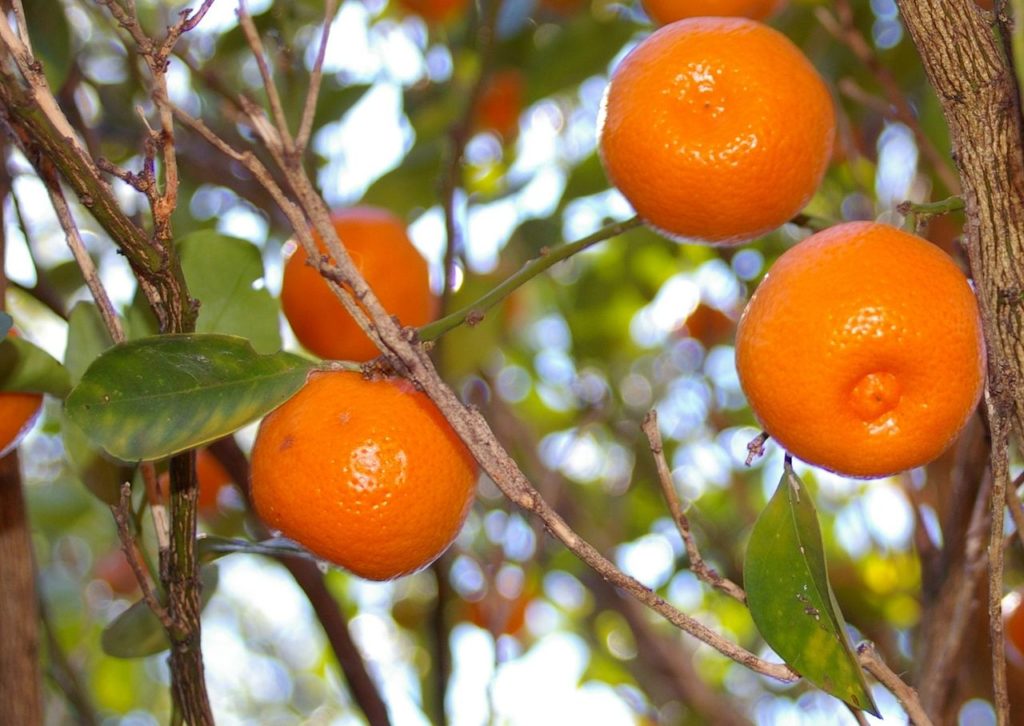
If you're looking to grow small orange trees, the Calamondin orange is the best for the job. Although the fruit itself is very tart, and not usually consumed raw, it is best reserved for lemonades and marmalades. This orange tree looks stunning in an outdoor setting, but should be brought indoors once weather cools.
Orange tree USDA zones: 8 through 11
Other Fruit Trees You Can Grow in Small Spaces

The above fruit trees are not the only ones you can grow in small spaces! There are a variety of shrubs which are perfectly suitable for an apartment balcony or a small backyard:
Where to Buy Dwarf Fruit Trees
Dwarf fruit trees can be purchased at your local nursery or home hardware stores. Additionally, they're easily found online, just be sure you're purchasing from a reputable website. Before buying any tree or plant, make sure it looks healthy and that it is self-fertile. If the tree does not self-fertilize, you will need to purchase two.
How to Care for Dwarf Fruit Trees
#1. Know Your Climate
Not all fruit trees can grow everywhere. You need to know whether or not a certain tree can grow in your climate. Check with your local nursery to see which fruit trees are best suited for your area.
#2. Place in a Sunny Spot
For fruits to produce, they'll need plenty of sunlight. Give your fruit trees at least 6-8 hours of direct or indirect sunlight, depending on the tree. The more sun they'll receive, the more fruit they'll produce, and the sweeter too!
#3. Choose the Right Size Pot or Container
It's very important to choose the correct sized pot or container for your fruit tree. Trees that are top heavy, such as apples for examples, will need heavier pots, like terracotta. While plastic pots or containers are cheaper alternatives, they may need to be swapped out for heavier duty ones as they reach maturity.
#4. Fertilize as Needed
Your fruit trees will need to be fertilized in order to produce fruit. Depending on what you're growing, you'll have different fertilizer needs. Be sure to research the type of tree you're growing and what type of fertilizer it will need, as well as how often.
#5. Water Correctly
As opposed to trees that are grown directly in the ground, container grown trees will need to be watered more often. Be sure to water deeply and water often, especially during warm summer months.


